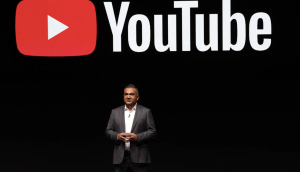Bond Capital founder Mary Meeker first published her annual “Internet Trends” report in 1995, when the internet was far from a household commodity (let along a handheld one).
Fast-forward 24 years and Bond’s latest report shows that despite the internet being far more widespread, some things aren’t as ubiquitous as one might imagine –and there appear to be some limitations on growth in certain areas.
With global internet users at just under four billion people as of the end of 2018 (with Bond’s information coming from the United Nations), the report found that growth has stalled significantly, from as high as 11% year-over-year (2010) to 7% year-over-year this past year. And even though mobile is the future, the report shows that there is an upward ceiling to that growth as well; in fact, 2018 was the first time new smartphone shipments went down from the previous year. Just over 1.4 billion units (mainly Android-powered) were shipped throughout the year, a decline of 4%. At peak smartphone growth in 2011, shipments saw as high as a 75% lift year-over-year. That has gone steadily downward as the devices become mainstream.
North America has the smallest growth potential of all areas studied, although 9% of the population is still estimated to be offline.
Although Canada does not rank among the top-15 countries for share of internet users, Canada does have some representation on the list of companies with the biggest share of the internet market. With an estimated US$34 billion in global market value, Ottawa-based e-commerce giant Shopify is #21 on the list of most valuable companies in the internet market (up from just $2 billion in the 2016 report). Microsoft has the biggest piece of the market pie at more than $1 trillion, while Amazon is in second at $888 billion, while Apple, Alphabet (Google) and Facebook rounding out the top five.
E-commerce itself continues to grow, with nearly $140 billion in ad revenue in the first quarter of 2019, but its year-over-year growth has slipped from a peak of nearly 20% to 12.4% most recently.
For online advertising, there’s still growth, though the report shows that the leading platforms – including the digital duopoly of Facebook and Google – might see some slower growth. While online ad spend in general continues positive acceleration (22% growth in 2018 versus 21% in 2017), growth in revenue specifically from the top U.S.-based platforms has slowed down considerably (20% in Q1 2019 versus 29% in Q4 2018). Growth has generally been slowing for these platforms since Q1 of 2018.
Google, Facebook and the combined entity of the next “big four” (Amazon, Twitter, Snap and Pinterest) still post overall positive growth (1.4%, 1.9% and 2.6% respectively), but quarter-by-quarter breakdowns showed that all three pulled in less revenue in Q1 than they did in Q4.
Meeker’s report identified the strongest aspects of some of the leading platforms as tools for advertisers to look out for – in the case of Facebook uber-customized targeting options are seen as the biggest area for potential growth. For YouTube, its machine learning capabilities are predicted to be a driver, while Pinterest’s e-commerce options are predicted to continue to drive advertising and Twitter’s high-relevance units were also cited as an area for growth potential.
In the case of mobile advertising, ad spend has finally caught up to time spent – almost a decade ago, time spent on mobile was at 8% of total media time, while ad spend was less than 1% of total media dollars. Now, the two are almost equal at a whopping 33%.
Between other forms of media, ad spend remains mostly proportionate to time spent with only two notable exceptions; radio advertising is still slightly under (8% of ad spend versus 12% of time spend) while print ad spend is still more than twice what the proportion of time spent is (7% versus 3%). However, it should be noted that print ad spend has long been much higher than time spent and the gap is narrowing; in 2010 print took in 27% of ad spend despite only representing 8% of time spent consuming.
Of online display advertising, 62% of dollars are now traded programmatically, up from 10% in 2012.























